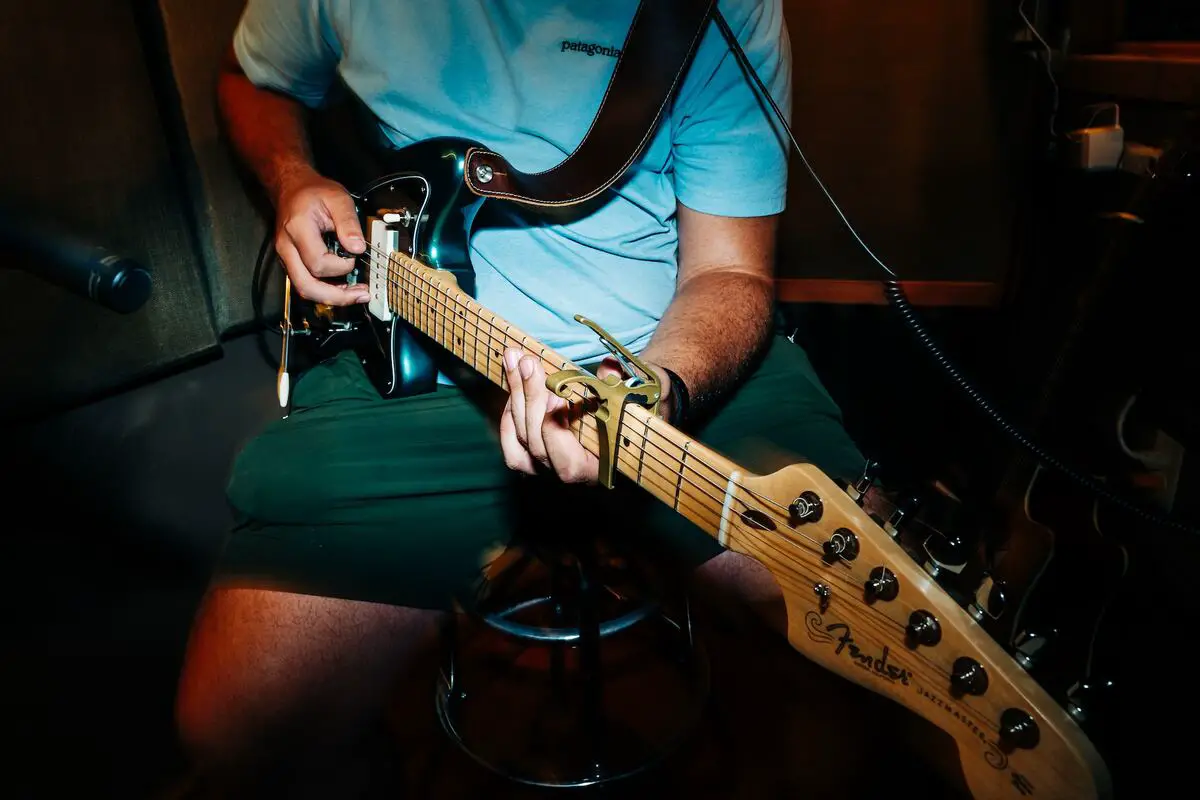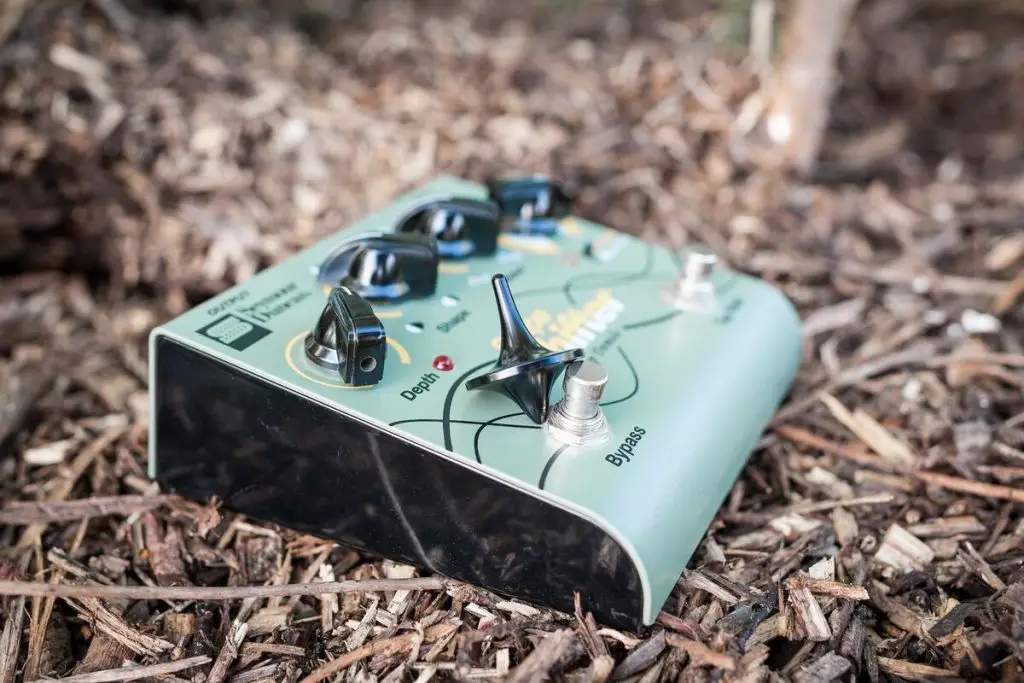Ever wondered what tremolo is? That pulsating effect that adds an otherworldly vibe to your favorite guitar tracks? Tremolo is a term with deep roots in the musical world, a phenomenon that’s responsible for creating these fluctuating sonic waves that bring a unique flavor to a composition. And if you’re curious to know more, let’s venture into the mesmerizing world of tremolo, and decode its origins, usage, and significance in music.
What is tremolo? Tremolo is fluctuation in sound volume produced by an electronic device, resulting in a distinct shuddering effect that’s become a favorite tool for many guitarists.
What is tremolo?
Tremolo in music is used to describe a rapid repetition of the same note or a rapid alternation between two or more notes. This effect can be created by various musical instruments, including stringed instruments like the guitar, violin or cello, and wind instruments like the flute.

Tremolo can also be produced electronically using an effects unit or software, which modulates the volume of the sound to create a vibrating effect. This technique is often used in electric guitar music to add a shimmering or wavering effect to the sound.
In musical notation, tremolo is usually represented by slashes through note stems or a series of shorter notes, depending on the intended execution. The term “tremolo” itself comes from the Italian word for “trembling,” effectively capturing the vibrating, oscillatory nature of the sound produced.
AKAI Professional MPK Mini MK3

AKAI Professional MPK Mini MK3
What is a tremolo used for?
Imagine this: you’re at a gig. The crowd is buzzing. You’re about to rip into your solo, but you want to make it special. Here’s where tremolo steps in. By manipulating the depth and rate, you can create a mesmerizing sonic landscape that leaves your audience captivated. Now, isn’t that something?
Tremolo can bring life to your performance by adding rhythmic variation and depth and it has been the secret sauce in the toolkit of many legendary guitarists.
- Low rate, low depth: Subtle pulsating effect.
- High rate, low depth: Adds a shimmer to your tone.
- High rate, high depth: Creates a choppy, helicopter-like effect.
Experiment with different settings and make tremolo a dynamic part of your performance. Remember, music is an emotional language, and with Tremolo, you’ve got another expressive tool at your fingertips.
What is a stompbox tremolo?
Let’s talk about stompbox tremolo. This form of tremolo is typically housed In guitar pedals, letting musicians easily add and control tremolo effects with their feet. Cool, right? If you’ve ever used a distortion or delay pedal, you’re not far off from the world of stompbox tremolo.
There are stompboxes with different waveforms – like a sine wave and triangle wave – that can create unique tremolo effects.
The beauty of stompbox tremolo lies in its versatility. There are stompboxes with different waveforms – like a sine wave and triangle wave – that can create unique tremolo effects. You can imagine waveforms as shapes your sound travels in. Sine wave gives you smooth, natural oscillations while a triangle wave makes the changes more abrupt. It’s like the difference between swimming in a calm lake versus a choppy sea.
How do you control a stompbox tremolo?
Controlling a stompbox tremolo isn’t as daunting as it seems. The main parameters are:
- Depth: Adjusts the intensity of the volume changes.
- Rate: Controls the speed of the volume changes.

Beyond these two main controls, many stompbox tremolos also offer additional features for more detailed sound shaping. For instance:
- Waveform control: This allows you to adjust the shape of the volume fluctuations, changing the character of the tremolo effect. Common waveform options include sine, square, and triangle waves, which can create sounds ranging from smooth and natural to abrupt and choppy.
- Tap tempo: Some stompbox tremolos allow you to manually tap in the desired tremolo rate with a dedicated footswitch, making it easy to sync the tremolo effect with the tempo of your music on the fly.
- Volume or level control: Some tremolo pedals include a volume or level control to compensate for any perceived drop in volume when the effect is engaged.
How can I add tremolo to my rig?
Alright, we’re on to the fun stuff now: Adding Tremolo to your setup. Just like when you’re adding a dash of hot sauce to your taco, placement matters. The typical place to put a tremolo pedal is at the end of your signal chain. This allows the tremolo effect to modulate your entire sound, rather than just a specific effect.
But hey, rules are made to be broken. Feel free to experiment with different placements. Your sound, your rules! Now, before we go pedal crazy, let’s take a step back. When integrating a Tremolo pedal into your pedalboard setup, there are a few precautions:
| Do’s | Don’ts |
|---|---|
| Do experiment with different placements. | Don’t place the Tremolo pedal right at the start of your chain. |
| Do adjust the depth and rate to suit your sound. | Don’t max out all controls at once. |
| Do try out different types of Tremolo. | Don’t stick to just one type without exploring others. |
Advantages and disadvantages of using tremolo
Before we sign off, let’s take a moment to weigh the pros and cons of using tremolo. It’s a fantastic tool when used well, but like any other effect, it’s not without its drawbacks.
Advantages of using tremolo
Here’s why you might want to dive into the world of tremolo:
- Adds a new sonic dimension: Tremolo can transform a plain sound into something captivating.
- Versatility: Tremolo isn’t genre-specific. From blues to metal, it finds its place.
- Easy to control: With basic controls like depth and rate, mastering tremolo isn’t a tall order.
- Mimics natural sounds: Tremolo can recreate the wavering pitch of the human voice, a wind effect, and more.
Disadvantages of using tremolo
While it’s got a lot going for it, here are a few reasons you might want to use tremolo sparingly:
- Specific effect: Tremolo has a specific sound that might not suit all musical contexts.
- Requires fine-tuning: To hit the sweet spot, you might need to spend some time adjusting the rate and depth.
- Can sound outdated: Some people associate tremolo with older music styles, so it can make your sound feel dated if not used innovatively.
If you want even more tips and insights, watch this video called “What is Tremolo | Popular Music Words Explained” from the Jacob Restituto YouTube channel.
Frequently asked questions (FAQ)
Hey, we’ve made it to the FAQ section! I’ve put together answers to some of the questions that tend to pop up around tremolo. Let’s get into it:
What’s the difference between tremolo in amps and tremolo in pedals?
While the principle remains the same, the execution differs. In amps, tremolo is usually tube-bias or optical, creating a softer, more vintage sound. On the other hand, pedals offer more modern tremolo effects, often providing a range of waveforms and greater flexibility.
How can I get a stutter-like tremolo effect?
For a staccato, stutter-like tremolo effect, you’ll want to max out the depth control and pick a square wave. It’ll cut the volume off sharply, creating that stutter-like feel. Just be careful not to overdo it!
Can I use tremolo for other instruments, not just guitar?
Absolutely! You can use tremolo on any instrument. It can add an extra layer of depth to keyboards, bass, or even vocals. It’s a versatile effect, so feel free to experiment.
Conclusion
Well, there you have it. We’ve gone from “What on earth is tremolo?” to “I’m a tremolo master!”. With a little creativity and a good ear, you can use it to add depth and character to your music. So did I cover everything you wanted to know? Let me know in the comments section below. I read and reply to every comment. If you found this article helpful, share it with a friend, and check out my full blog for more tips and tricks on music production and audio engineering. Thanks for reading and keep making those good vibrations!
Key Takeaways
This article covered the basics of tremolo in music production. Here are some key takeaways:
- Tremolo is a musical technique that involves the rapid repetition of the same note or a swift alternation between two or more notes.
- Tremolo is crucial in adding depth and rhythmic variation to the music, making it an essential tool for musicians.
- Stompbox Tremolo is a form of the effect typically found in guitar pedals, allowing musicians to easily add and control tremolo effects.
- The depth and rate are the main parameters to adjust when controlling a Stompbox Tremolo.
- While tremolo can add a new sonic dimension and versatility to a performance, it can also limit the musical contexts it fits into and may require fine-tuning to achieve the desired effect.















